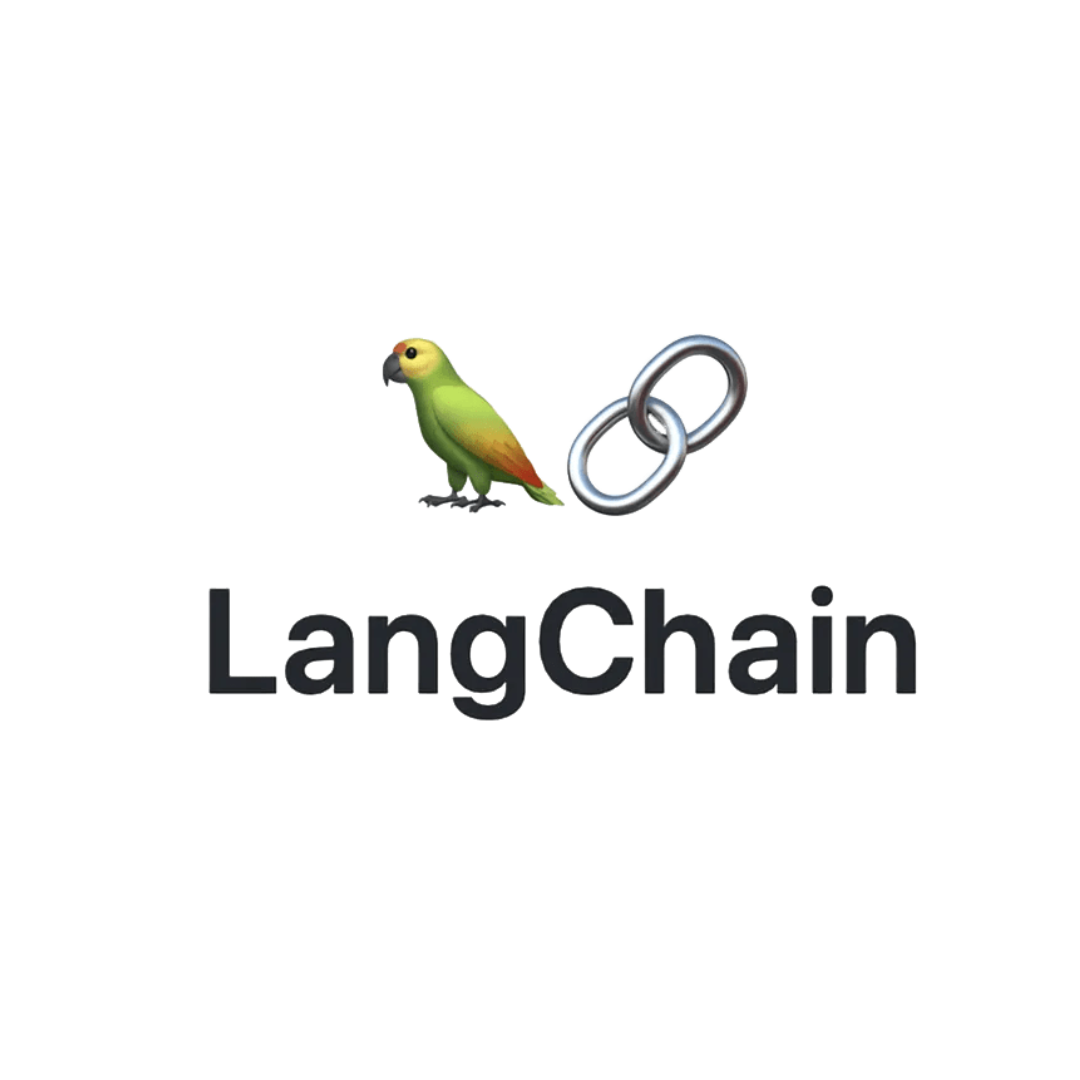
What is LangChain:
Langchain is a cutting-edge framework designed to streamline the development of applications powered by large language models (LLMs). It provides developers with a suite of tools and components that facilitate every stage of the LLM application lifecycle, from development to deployment.
At its core, Langchain offers a set of open-source building blocks that enable rapid construction and iteration of LLM applications. These components are designed to be modular and extensible, allowing for a high degree of customization and scalability. The framework supports a variety of programming languages, including Python and JavaScript, making it accessible to a broad developer community.
One of the key features of Langchain is LangSmith, an enterprise DevOps platform that integrates seamlessly with the framework. LangSmith provides developers with powerful tools for evaluating, testing, and monitoring their LLM applications. This ensures that applications are not only functional but also reliable and efficient.
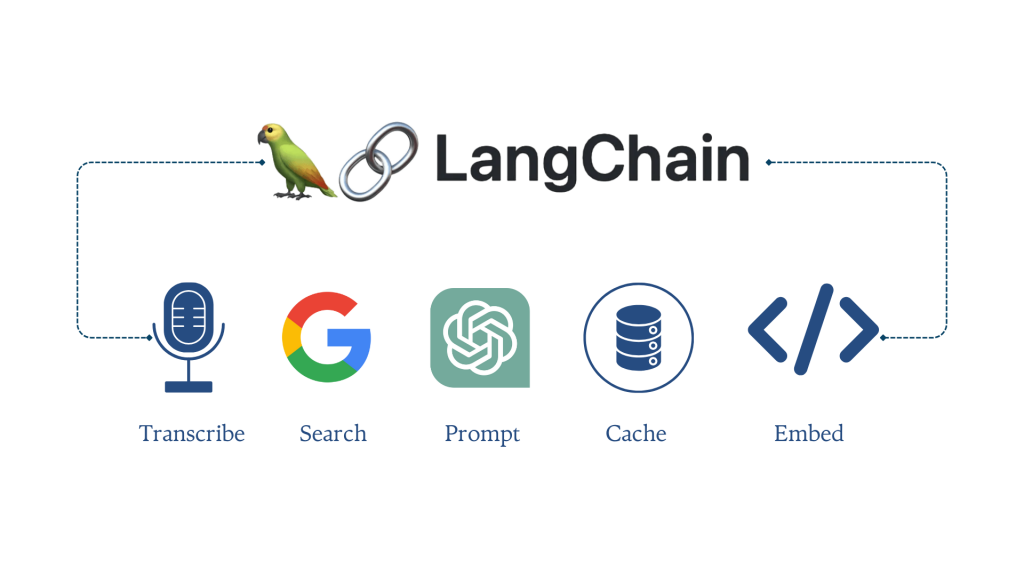
LangServe, another component of the Langchain ecosystem, allows developers to turn their LLM applications into REST APIs with ease. This means that once an application is developed, it can be deployed and made accessible to users as a web service.
The Langchain framework is also equipped with LangGraph, a tool for building robust, stateful multi-actor applications with LLMs. This allows for the creation of complex workflows and interactions within applications, further expanding the potential use cases for LLM-powered software.
Security is a paramount concern in the development of LLM applications, and Langchain addresses this by providing best practices and guidelines for secure development. This ensures that applications built with Langchain are not only powerful and versatile but also safe for both developers and end-users.
Overall, Langchain represents a significant advancement in the field of generative AI, providing a comprehensive and user-friendly platform for developing sophisticated LLM applications. Whether you’re a startup looking to innovate or an established enterprise seeking to enhance your AI capabilities, Langchain offers the tools and resources needed to succeed in the rapidly evolving landscape of AI technology.
Integrations with LLMs:
The Integration of Large Language Models in Modern Applications
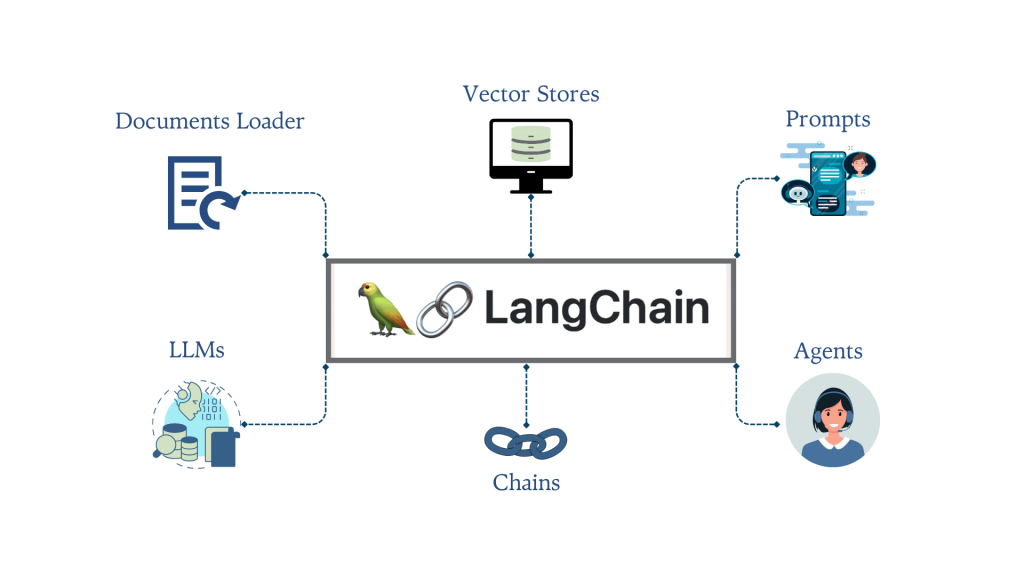
The advent of Large Language Models (LLMs) has marked a significant milestone in the field of artificial intelligence. These advanced systems, trained on extensive datasets, have the remarkable ability to understand and generate human-like text, transforming the way we interact with technology. From language translation to content creation, LLMs like OpenAI’s GPT-3, Google’s BERT, and Meta’s LLaMA are revolutionizing industries by providing sophisticated text generation capabilities.
One of the most exciting developments in this domain is the integration of LLMs into various software applications, a process that is enhancing the functionality and efficiency of these systems. The open-source Python framework LangChain, for instance, is a testament to the untapped potential of LLMs. It simplifies the development of LLM-powered applications, allowing developers to create advanced AI applications that can transcribe, interpret, and even interact with users conversationally.
Moreover, the synergy between LLMs and Vector Databases is paving the way for more precise and context-aware AI solutions. Vector Databases store data in ‘vector embeddings,’ which enable LLMs to process information with greater accuracy and contextual understanding. This integration is particularly beneficial for applications requiring a nuanced grasp of language, such as chatbots and virtual assistants.
Businesses are also leveraging LLMs to optimize workflows, integrating these models into collaborative tools for real-time document editing and feedback. This not only streamlines communication across departments but also fosters a more cohesive work environment.
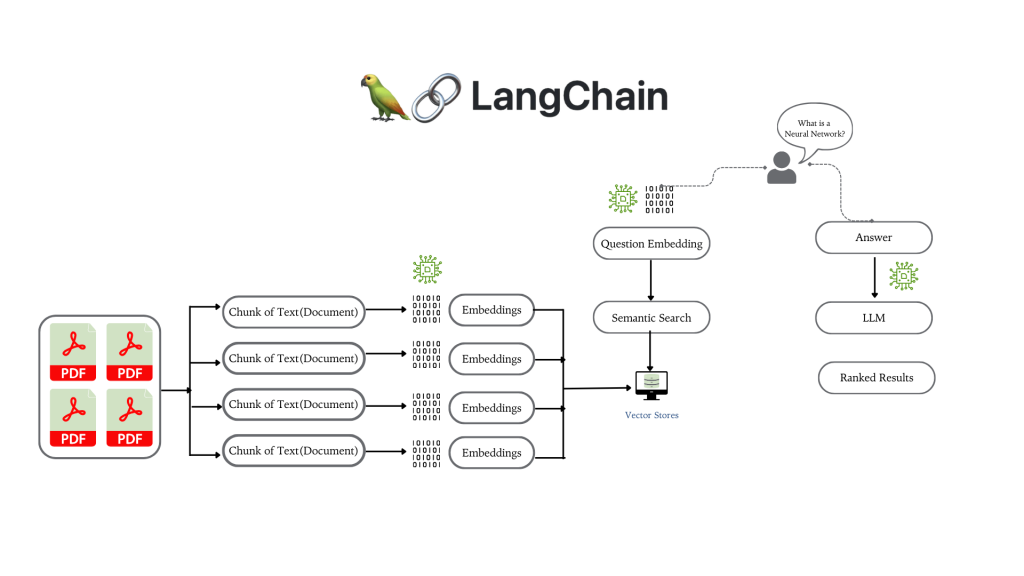
The implementation of LLMs extends beyond just enhancing existing applications; it also opens up new avenues for innovation. For example, integrating LLMs with graphs can augment graph learning algorithms and improve prediction models for various tasks, demonstrating the versatility of these models.
As we continue to explore the capabilities of LLMs, it is clear that their integration into modern applications is not just a trend but a transformative movement in the tech industry. The potential for LLMs to enhance and innovate is vast, and we are only just beginning to scratch the surface of what is possible with these powerful AI tools.
For those interested in delving deeper into the world of LLMs and their integrations, resources like DataCamp’s tutorial on building LLM applications with LangChain and Medium’s hands-on guide on integrating Vector Databases with LLMs provide valuable insights and practical knowledge for both AI enthusiasts and seasoned developers alike. The future of LLM integration is bright, and it promises to bring about a new era of intelligent, efficient, and interactive applications.
Challenges in Integrating Large Language Models into Applications:
The integration of Large Language Models (LLMs) into applications presents a myriad of challenges that developers and organizations must navigate. These challenges stem from the inherent complexities of LLMs, their integration requirements, and the dynamic nature of technological ecosystems. Here are some of the key challenges faced during the integration process:
1. **Choosing the Appropriate LLM API**: Selecting the most suitable LLM API for an application is a daunting task. With a variety of APIs available, each offering unique features and pricing structures, it’s crucial to choose one that aligns with the application’s needs and budget considerations.
2. **Quota and Rate Limit Restrictions**: Many LLM APIs have rate limits or usage quotas to manage server loads and prevent abuse. Not accounting for these limitations can lead to unexpected service interruptions, affecting the application’s reliability.
3. **Contextual Memory and Context Limitations**: LLMs are typically stateless, processing each request independently without the context of previous interactions. This poses a challenge for applications like chatbots that require a sense of continuity in conversations. Although there is no perfect solution yet, some vendors are implementing conversational memory features to address this issue.
4. **Templating**: In real-time use cases, prompts submitted to LLMs often contain a mix of hard-coded text and data from other sources. Using a templating framework can help organize prompts and avoid cumbersome string concatenations, leading to cleaner and more maintainable code.
5. **Handling Errors and Failures**: LLMs, like any other system, are prone to errors and failures. Developing robust error-handling mechanisms is essential to ensure the application can gracefully recover from such events.
6. **Testing and Fine-tuning**: LLMs require extensive testing and fine-tuning to ensure they perform optimally within an application. This involves adjusting parameters, training on domain-specific data, and continuously monitoring performance to identify areas for improvement.
7. **Implementing Caching Strategies**: To enhance performance and reduce latency, implementing caching strategies for frequently used queries can be beneficial. However, this must be balanced with the need for up-to-date responses, especially in fast-changing domains.
8. **User Privacy and Data Security**: Ensuring user privacy and data security is paramount when integrating LLMs. This includes complying with data protection regulations and implementing secure data handling practices to safeguard sensitive information.
9. **Architectural Complexity**: The probabilistic nature of LLMs introduces a different paradigm compared to traditional code, leading to architectural complexity. Small changes in prompts can yield different results, necessitating a thoughtful design to manage this unpredictability.
10. **Ethical Considerations and Bias**: LLMs can inherit biases present in their training data, leading to ethical concerns. Addressing these biases and ensuring the ethical use of LLMs is a significant challenge that requires ongoing attention.
11. **Scalability**: As LLMs grow in size and complexity, scalability becomes a concern. The performance of LLMs can be affected by the model’s depth, width, and data size, requiring careful consideration of scalability in the integration process.
12. **Regulatory Concerns**: The use of LLMs, especially in sensitive fields like healthcare, raises regulatory concerns. Ensuring compliance with industry-specific regulations is a critical challenge that must be addressed during integration.
These challenges highlight the need for a strategic approach to integrating LLMs into applications. By addressing these issues, developers and organizations can harness the full potential of LLMs to enhance their applications and provide innovative solutions to complex problems. For a more detailed exploration of these challenges, the resources provided by MDPI and Prolifics offer comprehensive insights. Additionally, for those interested in the ethical and regulatory aspects, the scoping review by Diagnostic Pathology provides valuable information.
How does LangChain work?
Understanding LangChain: A Framework for LLM-Powered Applications
LangChain is an innovative framework designed to streamline the development, production, and deployment of applications powered by large language models (LLMs). It provides developers with a suite of open-source tools and components that facilitate the creation of sophisticated LLM applications across various stages of the application lifecycle.
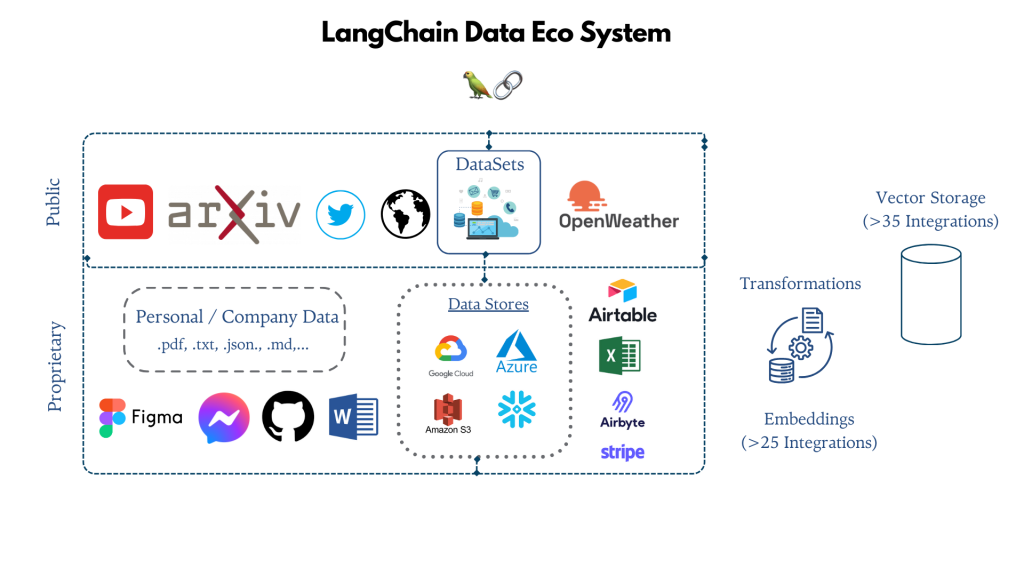
At its core, LangChain consists of several key libraries and components:
- langchain-core: This library includes base abstractions and the LangChain Expression Language, which is crucial for composing chains.
- langchain-community: This component offers third-party integrations, expanding the framework’s capabilities.
- Partner packages: These are specialized packages like langchain-openai and langchain-anthropic, which depend only on langchain-core.
- langchain: It encompasses chains, agents, and retrieval strategies that form the cognitive architecture of an application.
- langgraph: This tool enables the construction of robust, stateful multi-actor applications with LLMs by modeling steps as edges and nodes in a graph.
- langserve: A feature that allows the deployment of LangChain chains as REST APIs.
The broader ecosystem includes platforms like LangSmith, which aids developers in debugging, testing, evaluating, and monitoring LLM applications, and seamlessly integrates with LangChain.
How LangChain Works
LangChain operates by chaining together various components, referred to as links, to create a workflow. This workflow typically involves:
- A user posing a question to the LLM.
- The LLM’s vector representation of the question is used to perform a similarity search in a vector database.
- Relevant information is retrieved from the database.
- The LLM then generates an answer or takes an action based on this information.
Applications of LangChain
LangChain is versatile and can be used to build a wide array of LLM-powered applications, such as:
- Document analysis and summarization: Analyzing large volumes of text and summarizing content.
- Chatbots: Creating chatbots that can interact naturally with users, answer questions, provide customer support, and schedule appointments.
- Code analysis: Using LangChain to analyze code for potential bugs or security issues.
- Question answering: Employing various sources to answer questions on specific topics.
- Data augmentation: Generating new data similar to existing datasets, useful for machine learning model training.
- Text classification and sentiment analysis: Categorizing text and analyzing sentiments within the text.
- Machine translation: Translating text into different languages.
Key Concepts of LangChain
LangChain’s framework is built around several main properties:
- Components: These are modular building blocks, including LLM Wrappers, Prompt Templates, and Indexes, which facilitate information retrieval.
- Chains: Chains combine multiple components to solve specific tasks, making complex applications more modular and easier to debug and maintain.
- Agents: Agents enable LLMs to interact with their environment, such as using external APIs to perform actions.
LangChain simplifies the LLM application development process, making it accessible for developers to build powerful, intelligent applications. Its open-source nature and extensive documentation provide a strong foundation for innovation in the field of AI-powered solutions.
For those interested in diving deeper into LangChain, the official documentation and tutorials offer a wealth of information and step-by-step guides to get started with building your first LangChain application. Whether you’re a seasoned developer or new to the world of LLMs, LangChain provides the tools and support necessary to bring your ideas to life.
Evolution and Growth
Harrison Chase’s brainchild, LangChain, embarked on its journey as an open-source endeavor under the auspices of the machine learning startup, Robust Intelligence. Since its inception, LangChain swiftly captured the imagination of developers worldwide, garnering widespread acclaim and adoption. The project’s meteoric rise was propelled by the concerted efforts of a diverse community of contributors on GitHub, epitomizing the collaborative spirit inherent in open-source initiatives.
The year 2023 witnessed LangChain’s ascent to prominence, marked by a series of milestones that underscored its burgeoning influence in the AI landscape. Notable highlights include trending discussions on social media platforms like Twitter, vibrant engagement on the project’s Discord server, a plethora of informative YouTube tutorials, and engaging meetups held in tech hubs such as San Francisco and London. Moreover, LangChain’s strategic decision to incorporate as a startup proved fortuitous, culminating in a significant infusion of capital from esteemed venture firms.
Unveiling LangServe: Empowering Deployment
In a strategic move aimed at enhancing usability and scalability, LangChain unveiled LangServe in October 2023. This cutting-edge deployment tool heralded a new era of efficiency, empowering developers to seamlessly transition from prototyping in LangChain Expression Language (LCEL) to deploying production-ready applications. With LangServe at their disposal, developers could navigate the intricate terrain of LLM application development with unprecedented ease and agility.
Unraveling LangChain’s Capabilities
At the heart of LangChain lies its unparalleled versatility, enabling developers to harness the full potential of large language models across a myriad of use-cases. Let us explore the rich tapestry of capabilities that define LangChain’s essence:

Chatbots Reinvented
LangChain emerges as a veritable powerhouse in the realm of conversational AI, empowering developers to craft sophisticated chatbot experiences that transcend conventional boundaries. Leveraging LangChain’s robust framework, developers can imbue chatbots with unparalleled fluency and contextual understanding, thereby revolutionizing user interactions across diverse domains.

Document Analysis and Summarization
In an age defined by information abundance, LangChain emerges as a beacon of clarity, offering robust capabilities for document analysis and summarization. Whether it’s distilling key insights from voluminous reports or generating concise summaries with surgical precision, LangChain equips developers with the tools needed to navigate the deluge of textual data with ease.

Code Analysis and Generation
In the realm of software development, precision and efficiency reign supreme. LangChain rises to the occasion, offering a suite of tools for code analysis, generation, and debugging. From syntax and semantics checking to the seamless execution of shell scripts, LangChain empowers developers to streamline their coding workflows and unlock new realms of productivity.
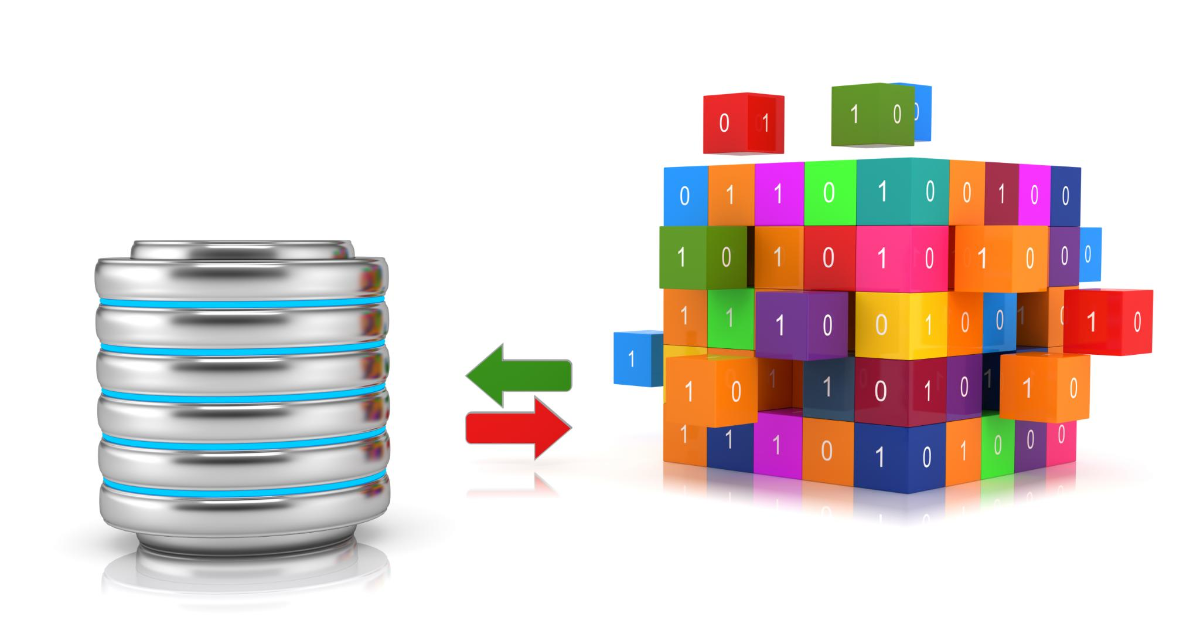
Synthetic Data Generation
The quest for high-quality, diverse datasets lies at the core of AI research and development. With LangChain’s synthetic data generation capabilities, developers can transcend the limitations of traditional data sources, effortlessly generating rich, diverse datasets tailored to their specific use-cases. From image synthesis to text generation, LangChain empowers developers to push the boundaries of AI innovation.

The Pantheon of Integrations
Central to LangChain’s appeal is its extensive array of integrations, seamlessly bridging disparate systems and services to unlock new realms of functionality. From cloud storage giants like Amazon, Google, and Microsoft Azure to cutting-edge AI models from OpenAI, Anthropic, and Hugging Face, LangChain’s integrations span the entire spectrum of AI and technology. Moreover, with support for diverse data sources, web scraping subsystems, and API wrappers, LangChain emerges as the cornerstone of a vibrant ecosystem of interconnected tools and services.
Challenges and Future
While Langchain holds great promise for the future of language technology, it also faces certain challenges and uncertainties.
Current Challenges
- Scalability: As the user base of Langchain continues to grow, ensuring scalability and performance becomes a pressing concern.
- Regulatory Compliance: Adhering to regulatory standards and data privacy laws poses challenges for the widespread adoption of Langchain.
- Integration with Existing Systems: Integrating Langchain with existing language technologies and infrastructure requires careful planning and coordination.
Future Prospects
Despite these challenges, the future of Langchain looks promising. With ongoing advancements in blockchain technology and language processing algorithms, Langchain is poised to revolutionize the way we communicate and interact across languages.
Conclusion:
In conclusion, Langchain represents a paradigm shift in language technology, offering a decentralized solution to the challenges of linguistic diversity and communication. By leveraging blockchain technology and innovative algorithms, Langchain empowers individuals and organizations to transcend linguistic barriers and embrace a truly globalized world.
FAQs
- Is LangChain accessible to individual users, or is it primarily aimed at businesses? LangChain caters to both individual users seeking language learning opportunities and businesses in need of translation and linguistic services.
- How does LangChain ensure the security of language data stored on the blockchain? Through encryption and decentralization, LangChain ensures the security and integrity of language data, mitigating the risk of unauthorized access or tampering.
- Can users earn rewards on LangChain? Yes, users can earn rewards on LangChain through various activities such as contributing language data, participating in language learning programs, and providing translation services.
- What languages are supported on the LangChain platform? LangChain supports a wide range of languages, including but not limited to major global languages and regional dialects, catering to diverse linguistic needs.
- How can businesses integrate LangChain into their existing workflows? Businesses can seamlessly integrate LangChain into their workflows through APIs and plugins, enabling smooth interoperability with existing systems and processes.
- Is Langchain suitable for businesses of all sizes? Yes, Langchain caters to businesses of all sizes, providing scalable language solutions tailored to their specific needs and requirements.
- How secure is Langchain’s language processing? Langchain employs advanced encryption techniques and consensus mechanisms to ensure the security and integrity of language transactions within the network.
- What sets Langchain apart from other language technologies? Langchain’s decentralized architecture and blockchain-powered platform ensure transparency, security, and reliability in language processing, setting it apart from traditional language technologies.
- Can individuals contribute to the Langchain ecosystem? Absolutely! Langchain welcomes contributions from individuals, developers, and language enthusiasts who are passionate about advancing language technology.
- What are some potential drawbacks of using Langchain? While Langchain offers numerous benefits, challenges such as scalability, regulatory compliance, and integration with existing systems may pose potential drawbacks for users and organizations.
